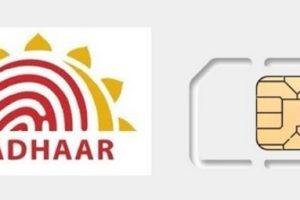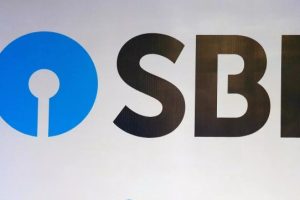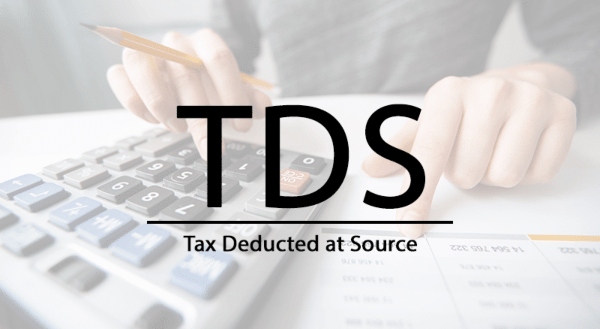If your bank, employer or any other financial institution has deducted tax in the wrong financial year, then now you can resolve this issue directly through the income tax department. You will not be required to approach the tax deductor to get the issue resolved.
The Central Board of Direct Taxes (CBDT) has notified Form 71 which a taxpayer can use to correct the wrong Tax Deducted at Source (TDS) credit for any financial year. The notification was issued on August 30, 2023.
Here is an example to understand this: Suppose an individual has FD interest of Rs 1 lakh in FY 2022-23 (AY 2023-24) due to which the bank will be required to deduct TDS. However, the bank deducted tax on FD interest in FY 2023-24 (AY 2024-25). As the bank deducted tax in the wrong financial year, the individual will not be able to claim credit for this TDS in FY 2023-24 (AY 2024-25). The FD interest was taxable in FY 2022-23 and TDS credit on this income can be claimed only for FY 2022-23.
Another instance can be of dividend from shares: “Suppose Mr. A holds 4500 shares of Company X which declared a dividend of Rs 100 per share in FY 2022-23. Accordingly Mr. A declared this dividend income in his ITR for FY 2022-23 (AY 2023-24). However the company paid this dividend in FY 2023-24 and deducted TDS on such dividend at that time i.e. FY 2023-24. Hence the same would appear in Form 26AS/ TIS/ AIS of FY 2023-24 based on which Mr. A may claim the TDS credit. However, since there is no dividend income reflecting in the ITR for FY 2023-24 corresponding to the TDS credit, the revenue may deny the TDS credit to the assessee,” says says Dr Suresh Surana, Founder, RSM India, a tax and business consulting group.
Hence, to correct this problem, from October 1, 2023 an individual can directly contact the income tax department instead of visiting the bank branch.
This form can be used to resolve TDS mismatch issues for any income from previous financial years.
“Many individual taxpayers were facing the issue where tax is being deducted by the deductor (bank or any other deductor) in the financial year in which the income is actually paid to the assessee. However, many individuals declare income when it is due to them instead of when it is paid or credited in their bank account. This results in a TDS credit mismatch. Since the due income has already been declared in the ITR by the individual in earlier years, but TDS is only being deducted in the financial year when actual payment is being made,” says chartered accountant (CA) Satbir Singh, founder, Taxheal.com, a Chandigarh-based CA firm.
“TDS credit mismatch issues happen when the method of accounting followed by the recipient of income (taxpayer) and the payer of income (bank etc.) varies. It becomes difficult for the taxpayer to claim TDS credit in the FY in which tax is deducted since income is not declared in ITR in that year,” says Surana.
Why CBDT issued the new Form
CBDT issued a new Form to resolve this issue because many times a taxpayer might get the opportunity to claim credit of the wrongly deducted tax.
“For taxpayers, it may not be possible to file a revised ITR for the particular FY to claim tax credit as the last date to file a revised ITR has already expired,” says Singh from Taxheal.com.
“The aforesaid amendment shall be beneficial for businesses such as service industry, wherein income is booked on provision of the services on accrual basis, however, tax is deducted by the service receiver, subsequently, at the time of payment against such services. For instance, fee on account of professional services rendered, of Rs 1 lakh has been declared in the ITR for FY 2022-23 (AY 2023-24), however, credit of TDS on such income could not be claimed in the said ITR , since the same was deducted and deposited by the service recipient in the subsequent year on receipt of invoice and, therefore, was not reflecting in the tax credit statement (Form 26AS) of the Taxpayer,” says Sanjoli Maheshwari, executive director, Nangia Andersen India, a business consultancy company.
“The process of claiming TDS credit has been immensely simplified for the taxpayers. This would help the taxpayers to claim TDS credit which were earlier not available due to the income and corresponding TDS mismatch, resulting in stalling of eligible refund,” says Maheshwari.
What is Form 71?
“The new Form 71 will allow an individual to solve the problem of TDS credit mismatch. It will allow an individual to claim tax credit if income (on which tax has been deducted) has already been declared in ITR by the taxpayer in earlier FY,” says Singh.
“Form 71 and its related tax laws/provisions can be taken advantage of by a Taxpayer even in situations wherein revised/belated/updated return is filed by the Taxpayers, however, the corresponding TDS claim not been considered due to the same reflecting in Tax credit statement (Form 26AS) of subsequent financial year,” says Maheshwari.
Time limit to use new Form 71
“There is a deadline by which an individual can use Form 71 to correct a wrong TDS credit issue. As per Income-tax Act,1961, an individual can file Form 71 to the income tax department within two years from the end of the financial year in which TDS was deducted. The form can be filled in for any previous financial year in which income was actually subject to TDS. For example, say the bank was required to deduct TDS on FD interest in FY 2018-19. However, the bank deducted TDS in FY 2021-22. An individual can submit Form 71 to the income tax department by March 31, 2024 (till FY 2023-24) to claim TDS credit. Once this deadline is missed, this form cannot be submitted,” says Maheshwari.
“The Finance Act, 2023 inserted sub-section (20) to Section 155 with effect from October 1, 2023. This new sub-section is applicable when an income has been reported in an ITR for a specific assessment year, and tax was withheld by the deductor and paid to the government in a later financial year (TDS). Section 155(20) enables the taxpayer to file an application in Form Number 71 to the assessing officer (AO) within 2 years from the end of the financial year in which the tax was withheld, and the AO will amend the assessment order, and allow credit for such tax deducted at source,” says Naveen Wadhwa, VP, Taxmann, a Delhi based company which publishes tax books.
Form 71 can be submitted online on the income tax e-filing portal by the taxpayer, as per the CBDT notification. The form must be verified either using an electronic verification code (EVC) or by using a digital signature certificate (DSC), whichever is applicable.
Source By: economictimes










